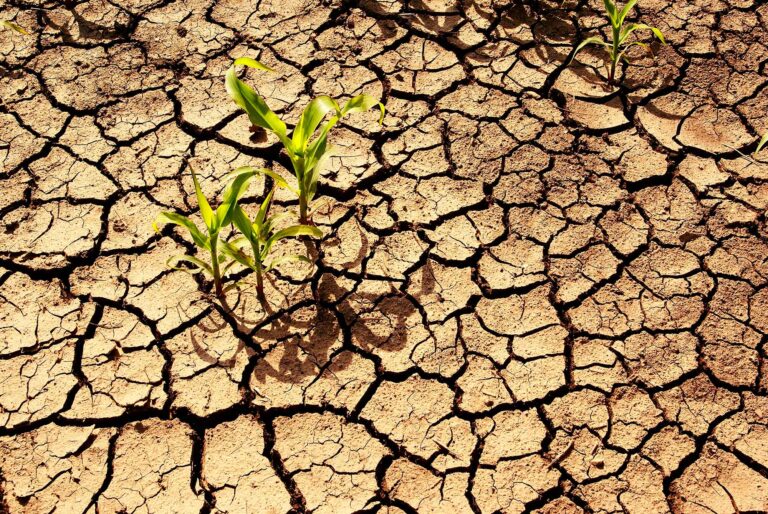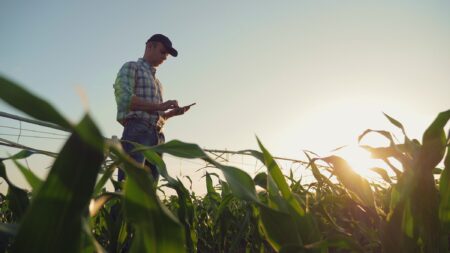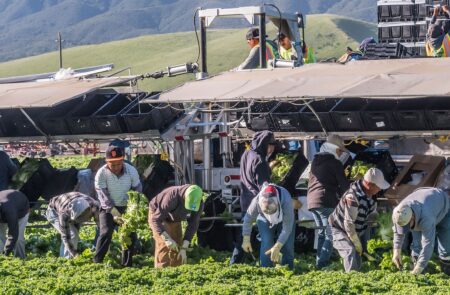Crop subsidies and crop insurance can feel like a bit of a mystery at times. Pretty much everyone has heard about them, but unless you are a row-crop producer or work in crop insurance, chances are you still have questions.
So, here’s a primer on how these things work for American growers.
The U.S. government provides subsidies — monetary payments and other types of support — to certain farmers and agricultural businesses. Subsidies can be given to support specific practices, support disaster aid, marketing, to mitigate risks, and more.
Subsidies first appeared in the first Farm Bill in 1933, the Agricultural Adjustment Act. Due to crop prices dropping after World War I and the effects of the Great Depression and the Dust Bowl, subsidy programs were created to reduce surplus and raise crop prices. Farmers were eligible to receive subsidy payments in exchange for agreeing to reduce production of certain commodity crops. The Agricultural Adjustment Act of 1938 established crop insurance as a type of subsidy.
The main type of subsidies is in the form of crop insurance. As we know, farming is a risky business. No one can control the weather or natural disasters, so insurance exists to help shield farmers from some of the risk. The farm bill, alongside the USDA’s Risk Management Agency (RMA) sets the price for insurance, determines coverage options, and creates new crop insurance programs when old ones are outdated or no longer working. Crop insurance is completed on a county-by-county basis. What county you farm in determines what crops you can insure.
Independent agents who are approved insurance providers sell and service crop insurance policies. The USDA’s role is to help finance, regulate, and reinsure the policies. Estimates show that subsidies cover an average 62 percent of premiums.
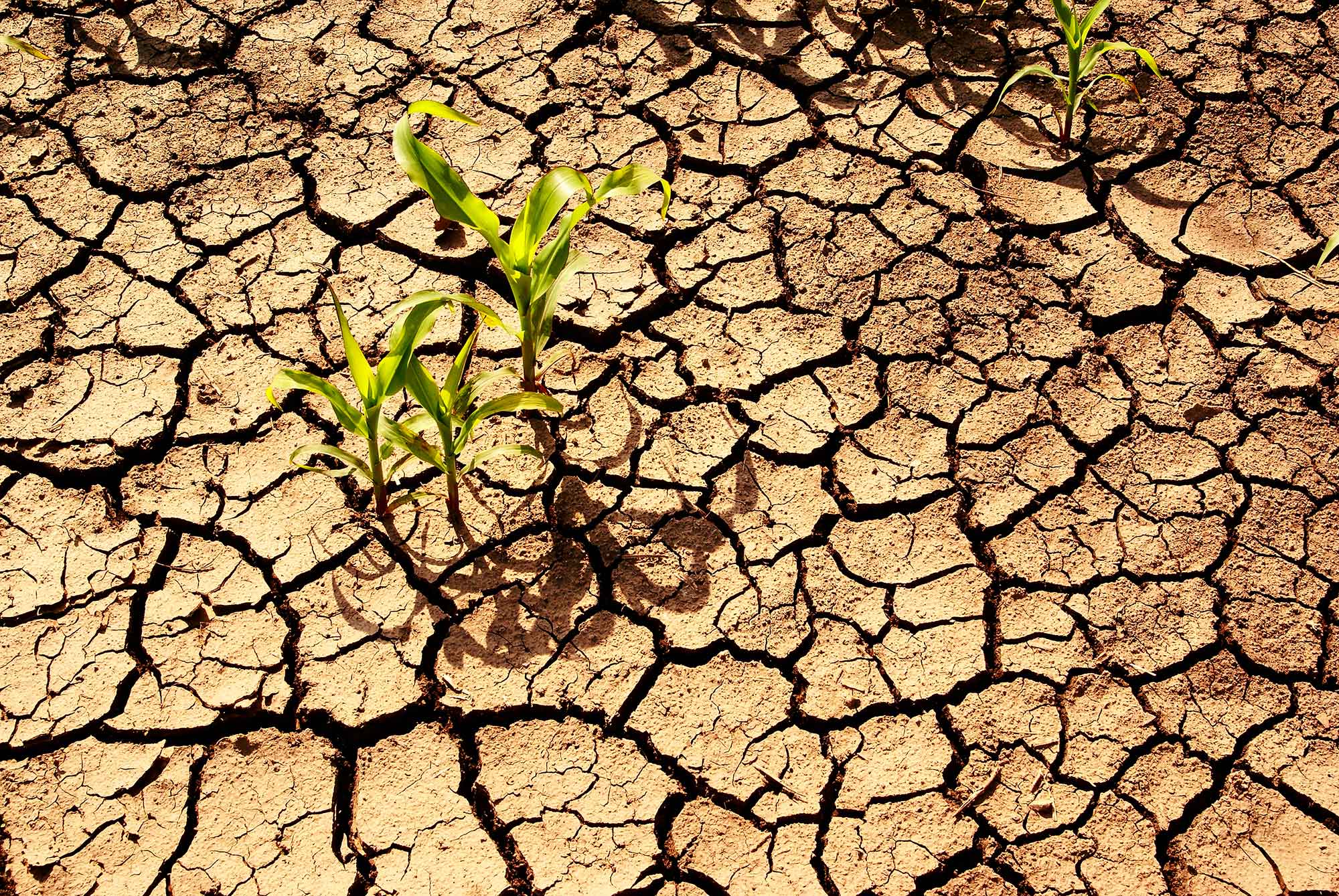
This model of crop insurance is essential because it means farmers can purchase insurance from someone local to them who understands the uniqueness of their operation. It also means the USDA doesn’t have the administrative burden of doing this themselves. Prices are set by the RMA, so the most important decision facing farmers when choosing an insurance agent is finding one that you have a good relationship with and who knows your crops. These agents will help farmers and ranchers find the policy that’s the right fit for their operation.
There are two main types of insurance policies: Revenue Protection and Yield Protection. Revenue Protection protects producers from harvest price market drops, while Yield Protection will protect a producer from having a yield loss, generally due to weather, insect and disease, and other “covered perils.” Revenue Protection policies are generally more expensive.
After selecting a plan, farmers choose their level of coverage. Every crop is different, but coverage is generally somewhere between 60 percent and 90 percent. This determines how much of a crop is covered in a loss situation. The lower the coverage, the more extreme the crop losses need to be for the farmer to be paid. The level of coverage directly impacts the premium the farmer pays, so a higher cost equals a higher coverage.
Farmers Business Network’s blog offers a great explanation of a coverage example:
If your actual production history on a particular farm is 180 bu/ac, and you have 80 percent coverage, you would have an insurance guaranteed yield of 144 bu/A. If your farm had a yield of only 120 bu/A, then you would take the difference of the guarantee and the actual yield (144-120 = 24), multiply that by the projected price (if your projected price is $4.15, then 4.15 x 24 = 99.60). You’d receive $99.60 per acre in insurance payout for that farm.
Farmers covered by crop insurance are required to follow the USDA’s requirements on good farm practices for planting, growing, and harvesting their crops. This requirement reduces the risk of operator-caused crop losses. There are also conservation requirements in place to protect wetlands and highly erodible lands. If farmers don’t comply with these requirements, they can be disqualified from crop insurance and other subsidies.
Farmers can receive premium subsidies to help reduce their cost for insurance. These subsidies come in the form of discount rates. These discount rates are set by statute in the farm bill. There is also an administrative fee for insurance. Certain farmers — such as beginning or veteran farmers and ranchers — can receive other subsidies to help with the cost.
Insurance plans are highly customizable, so no matter the size of the farm, crops grown, or any other factor, every producer can find something that’s the right fit for them. It is estimated that federal crop insurance covers about 100 crops, but corn, soybeans, wheat, and cotton are the main ones since they are grown on the most U.S. acres.
Crop insurance is an important tool for farmers to be able to ensure they receive an income even in years with losses. Losses are inevitable in this line of work, so crop insurance plays an important role in ensuring farmers and ranchers can make it through a bad year and continue on.


Other notable subsidies offered to farmers include the Price Loss Coverage, Agriculture Risk Coverage, and the Marketing Assistance Loan Programs.
- The Price Loss Coverage program issues payments when the effective price of a covered commodity is less than the effective reference price for that commodity.
- Agriculture Risk Coverage programs issue payments when revenue is lower than it is guaranteed or below a benchmark average for the farm.
- The Marketing Assistance Loan program allows producers to use eligible commodities they’ve produced as collateral for government-issued loans.
Another example of a subsidy offered to farmers is through the Emergency Commodity Assistance Program. This one-time direct payment is designed to help producers mitigate the impacts of increasing input costs and falling commodity prices. There are lots of other subsidies for various purposes.
An important thing to know is that farmers never automatically get free subsidies. They must enroll in programs that they’re eligible for and meet all the requirements. Subsidy programs are designed to support farmers, especially in emergencies or unforeseen circumstances. Crop insurance is the largest subsidy, but all of them play an important role in supporting our farmers and ranchers through tough times so they can keep doing their job, feeding the world.
Michelle Miller, the Farm Babe, is a farmer, public speaker, and writer who has worked for years with row crops, beef cattle, and sheep. She believes education is key in bridging the gap between farmers and consumers.


:max_bytes(150000):strip_icc()/44467609092_de0dd33a28_o-ea570461a64240d9bdad9717b3374b48.jpg)
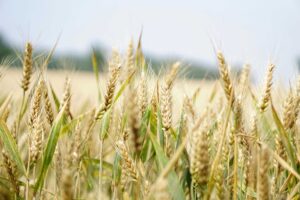
:max_bytes(150000):strip_icc()/Markets-2-Storm-candlestick-up-9-4bd8982c0a6b4c0e9e01a0d2bcb070ed.jpeg)


